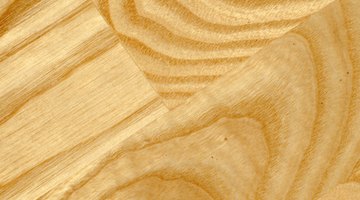Different Types of Wood in the Caribbean
The Caribbean is one of the most beautiful regions in all of the world, with lush greenery among the highlights of the tranquil area. When you think of the Caribbean, you might think sandy beaches, blue placid water and resorts.

It is not often that wood from the area comes up in conversation, but the Caribbean is the site for some of the best quality wood found in home and other design projects.
Caribbean Rosewood
This is definitely not your ordinary strain of brown wood that is plain looking and found anywhere in the United States. Rosewood has a unique color to it, with some grains having a creamy backdrop while others are swirling with orange and brown. Black stripes are even found on some rosewood in the region. It is known as "poison wood" because respiratory distress can occur if you come in contact with dust from this wood.
Ziricote
It is often referred to as cericote or as a geiger tree, but this type of wood found in the Caribbean is also native to the Florida Keys region of the Sunshine State. It is a dark-grain wood that lends itself nicely to carvings. In addition, wood jewelry such as hair barrettes, bracelets and earrings are made from ziricote wood.
Milo/Beach Hibiscus
Another wood with a dark grain, beach hibiscus is often the foundation for bowls, dishes and platters. If you have eaten in the Caribbean region and your food comes on a plate or dish like this, the chances are the wood may come from a hibiscus background. Like with cericote, a distinctive feature is the shine and gloss. Many varieties of hibiscus can be found in the Caribbean, although the tree and flower can blossom and grow in warm-weather climates.
Ironwood (Lignum Vitae)
This species of wood is not likely to be broken by someone anytime soon (at least not without the aid of a chainsaw or manual equipment), because ironwood is one of the hardest woods in the world. Lignum vitae can be found in South America, Central America and Florida in addition to the Caribbean. This wood was often used in different types of machinery because of its durability. According to the Herbs 2000 website, the wood has medicinal purposes because the resin has two acids, guaiaretic and guaiaconic, that are effective as stimulants, laxatives and anti-inflammatory agents. The resin has been used to treat gout, syphilis, sore throats and arthritis.
References
Writer Bio
Steve Ungrey has been a sports reporter in the Grand Rapids area since 1993 and has freelanced for "The Grand Rapids Press" and KFFL.com, a fantasy sports website. Ungrey is a 1992 graduate of Grand Valley State University with a Bachelor of Arts in journalism.
Photo Credits
- wood image by Zbigniew Nowak from Fotolia.com
- wood image by Zbigniew Nowak from Fotolia.com
More Articles



